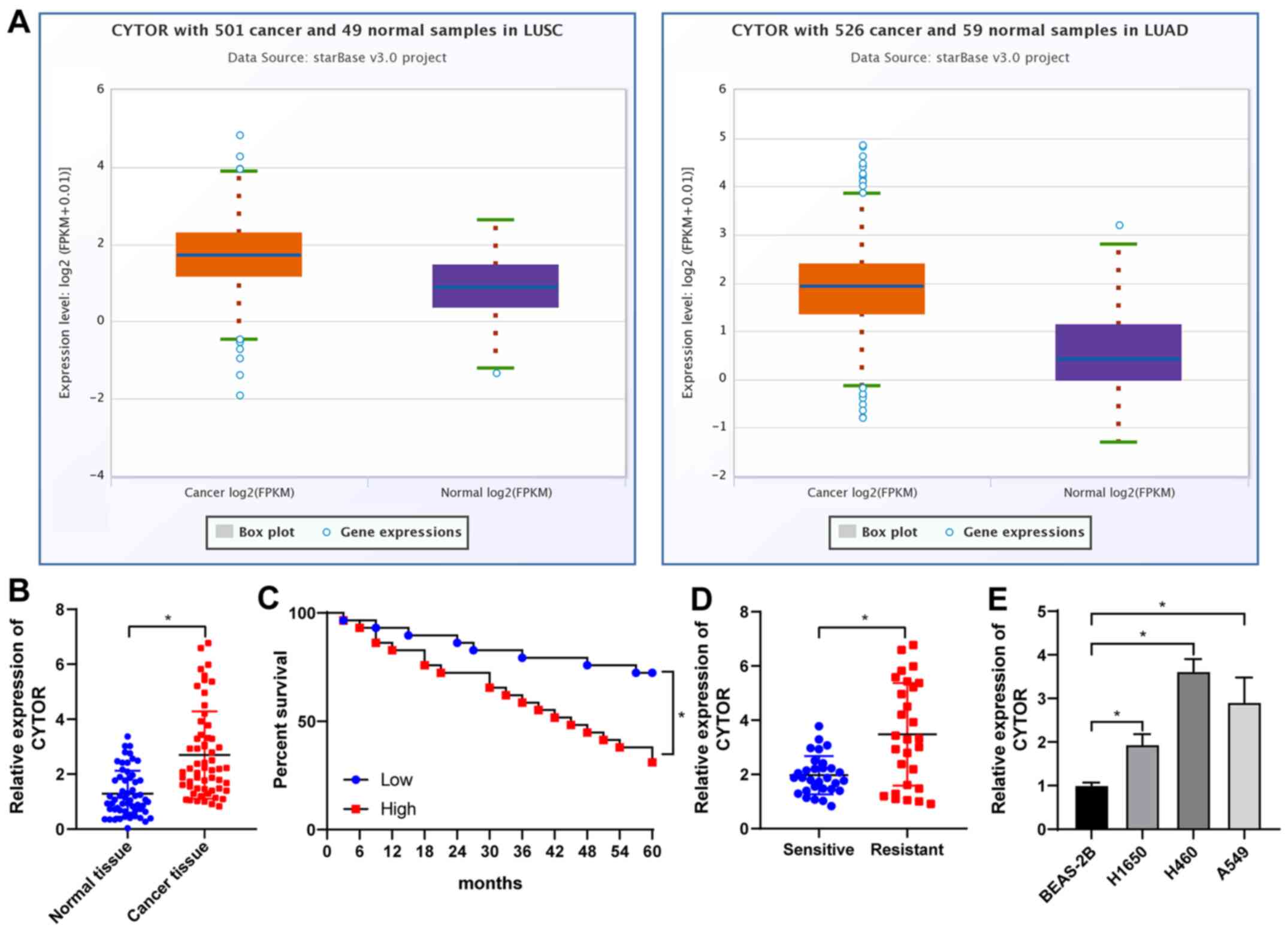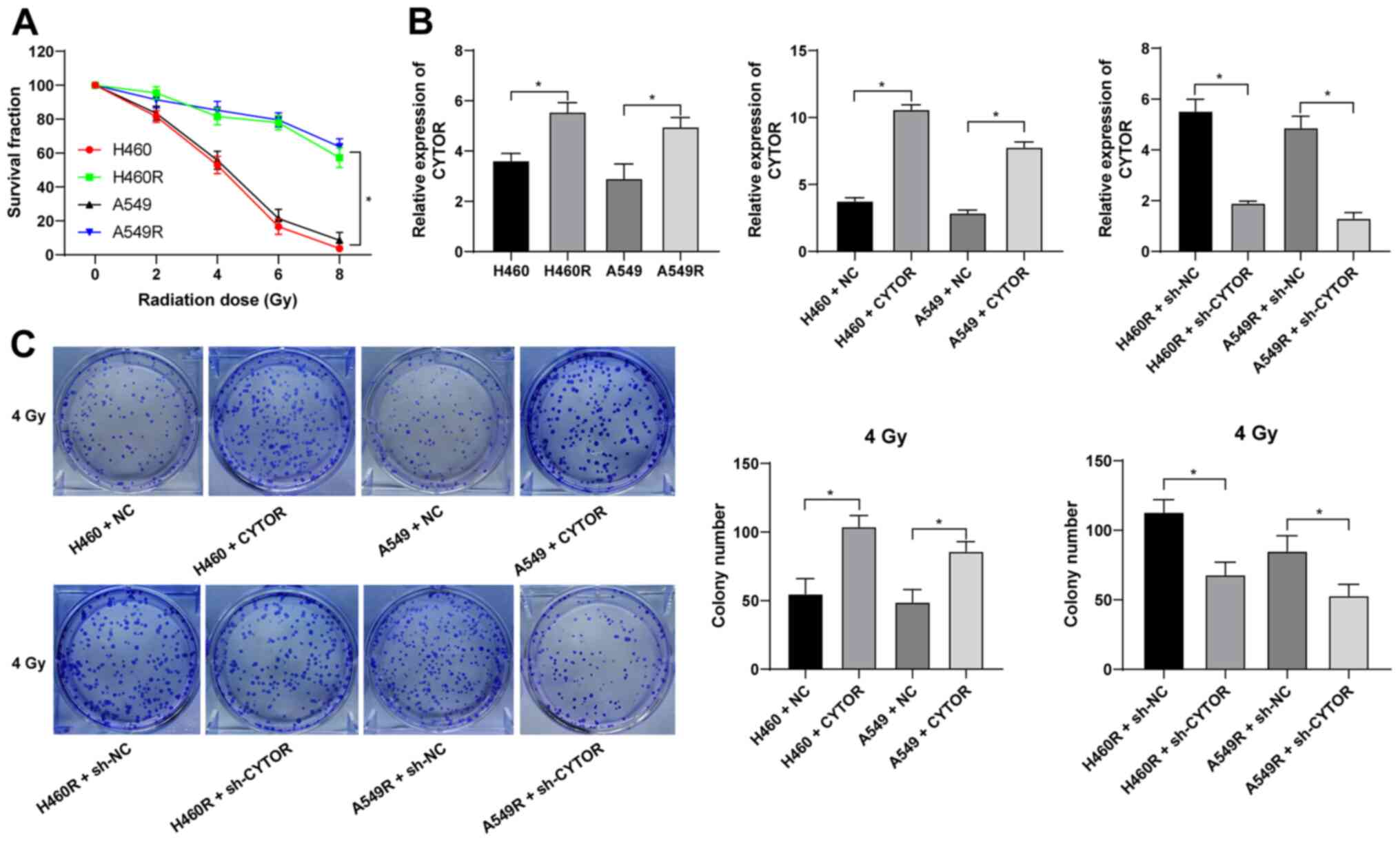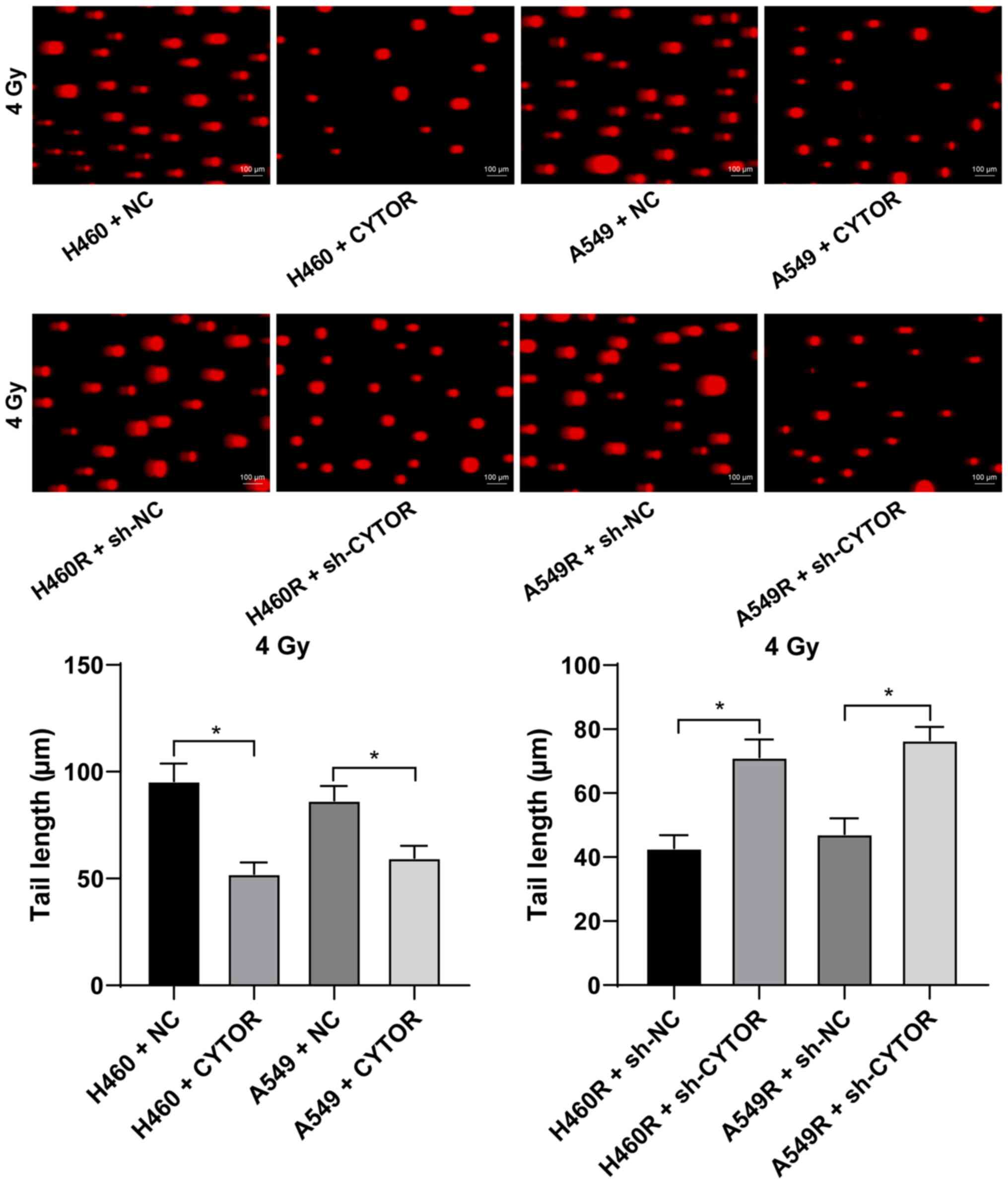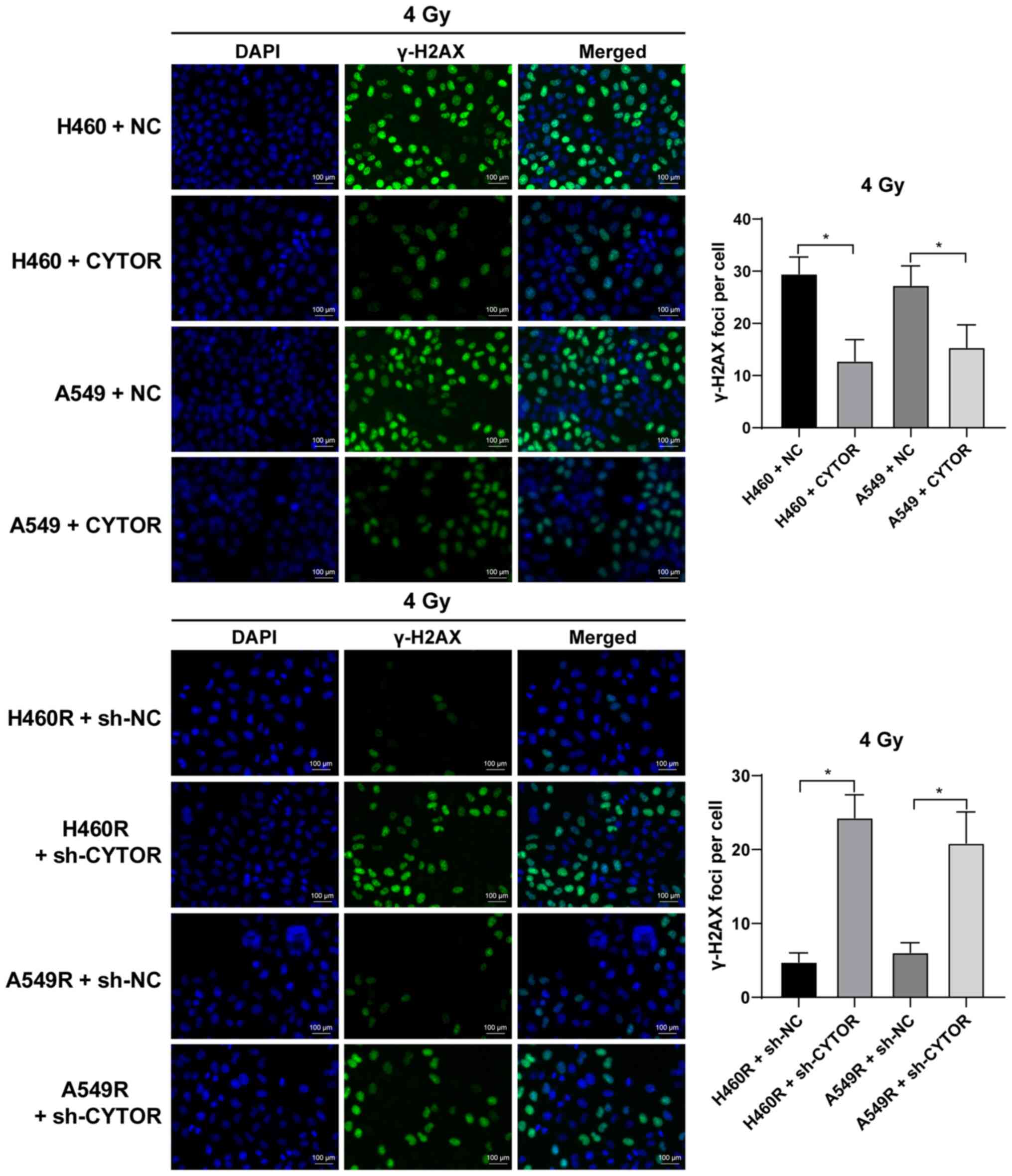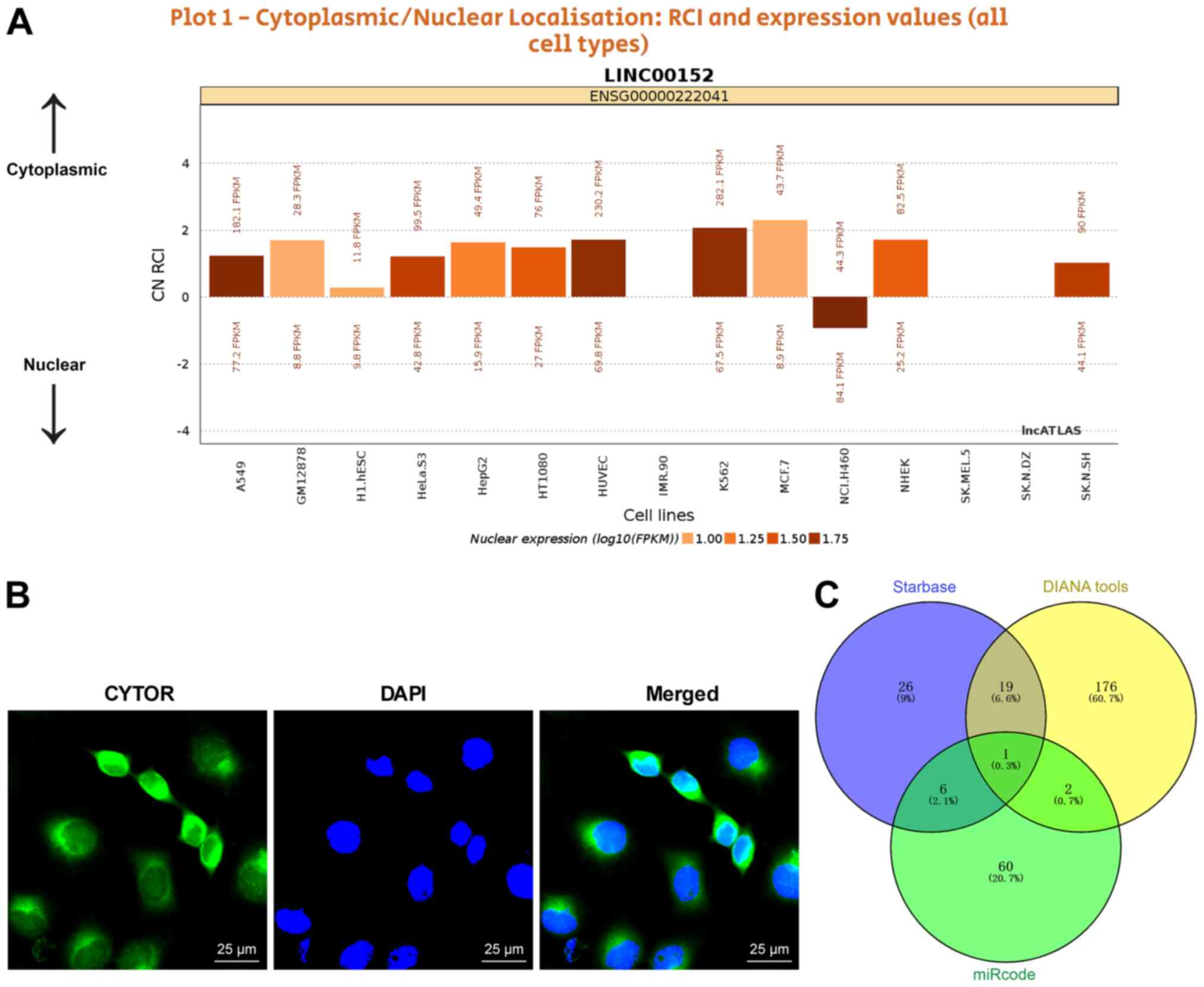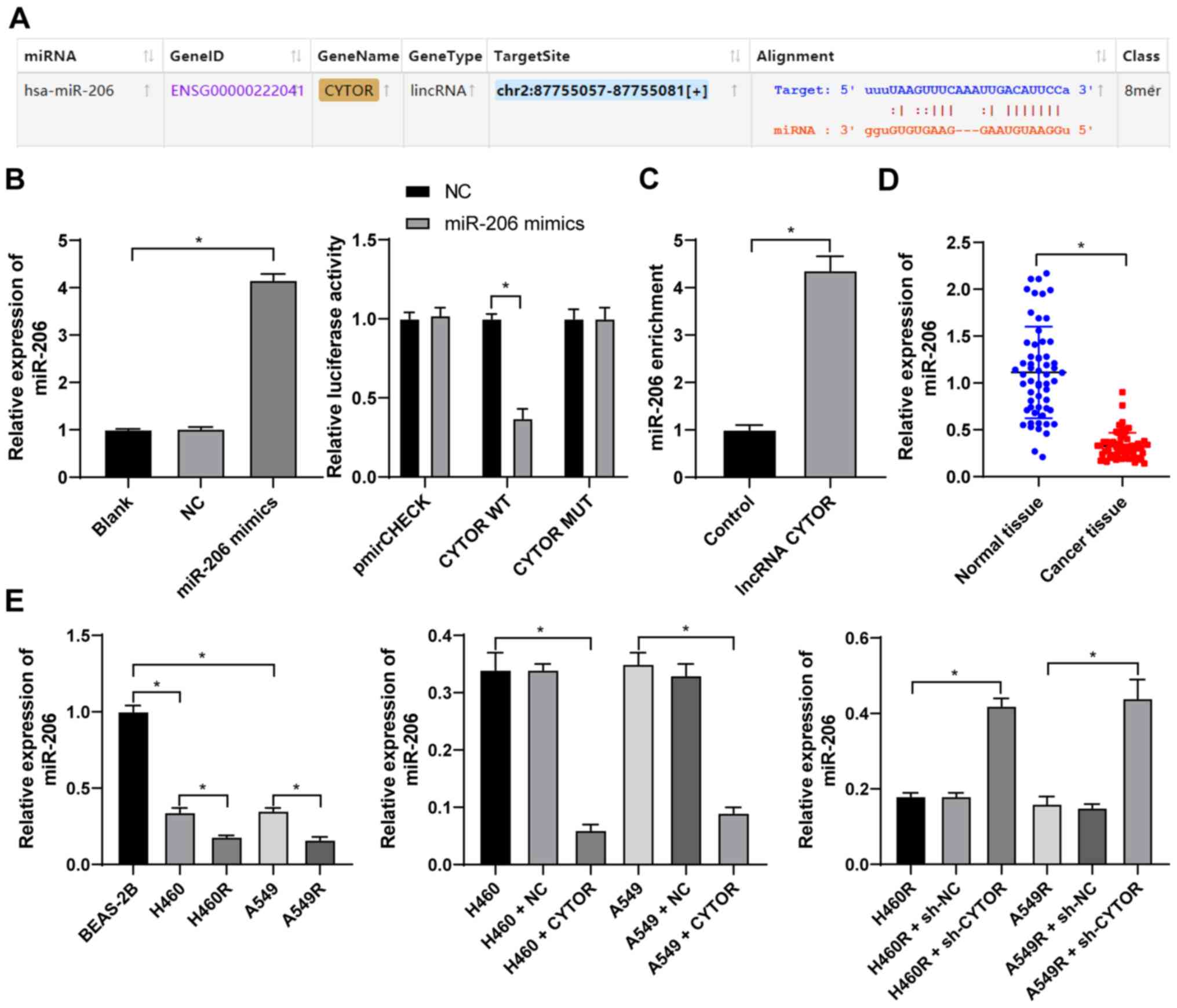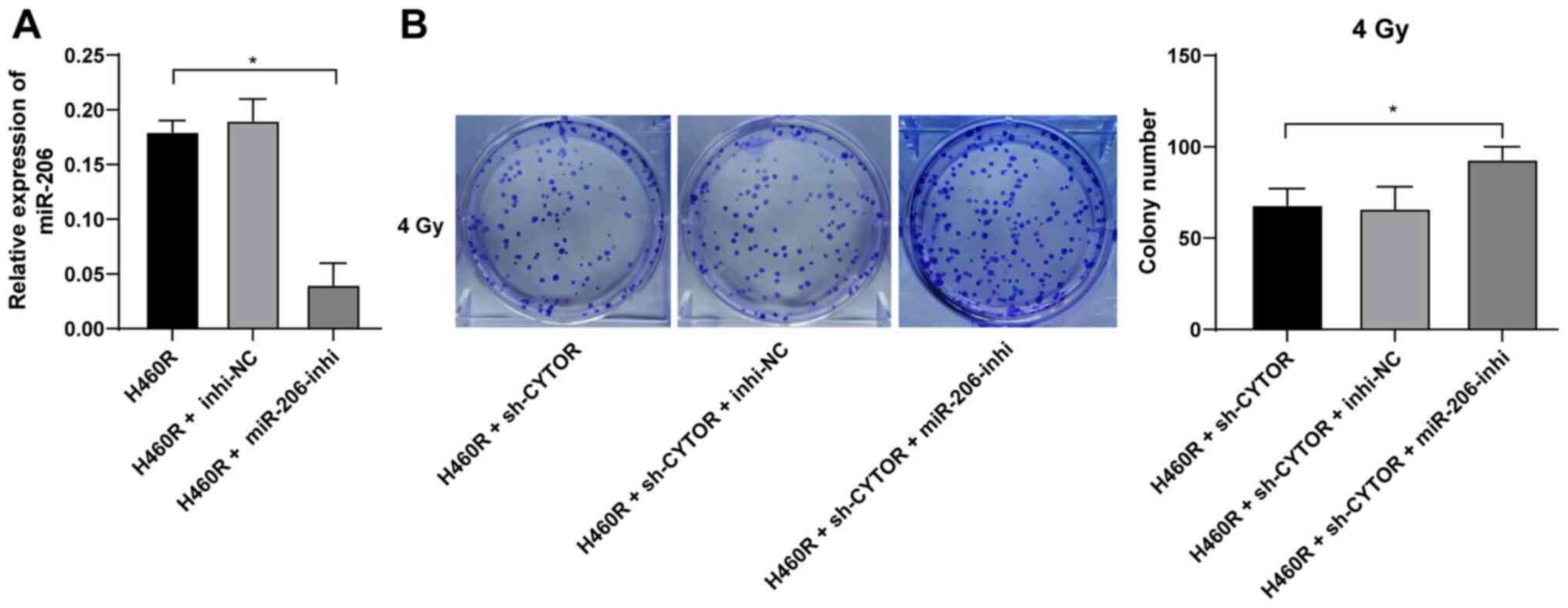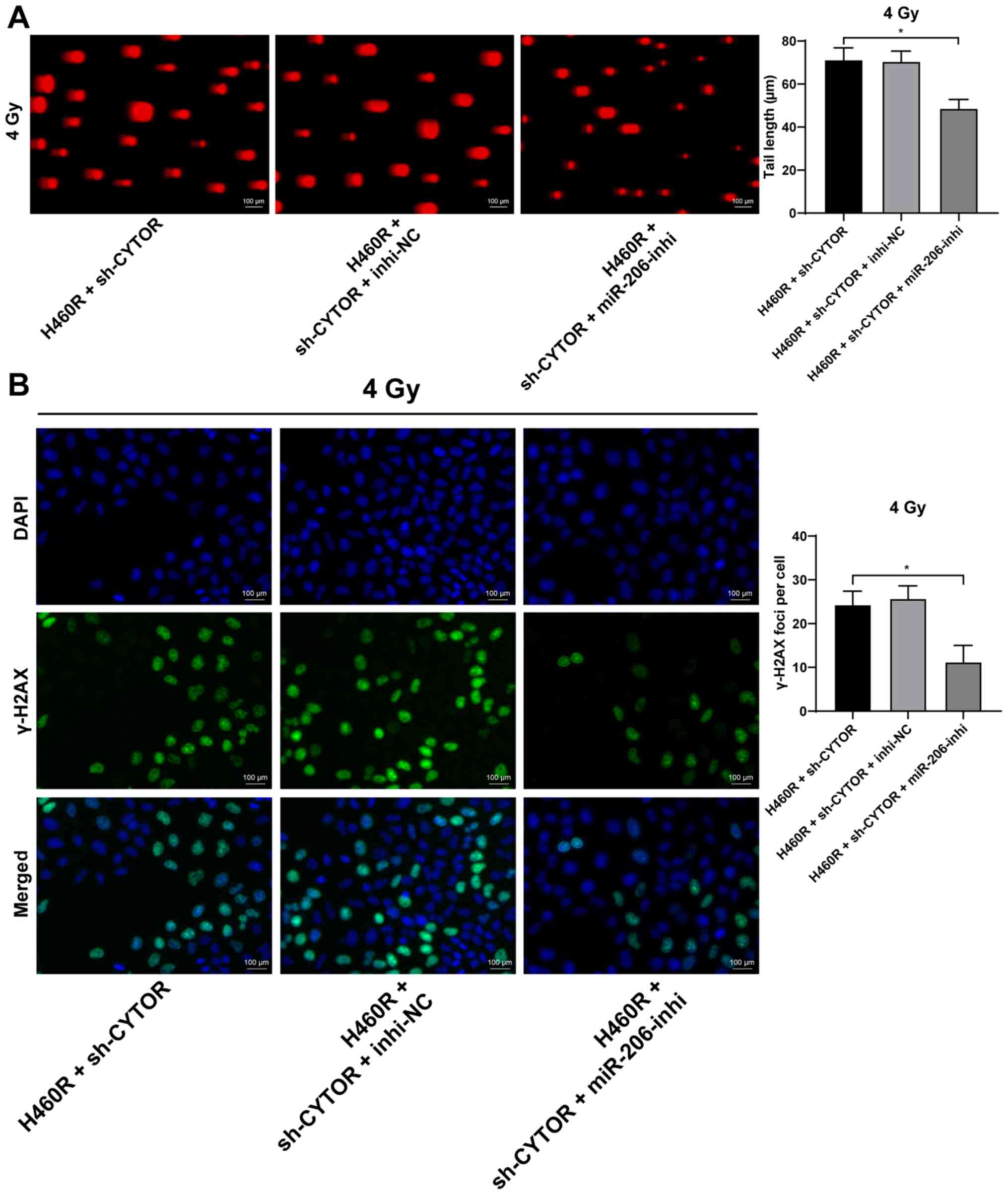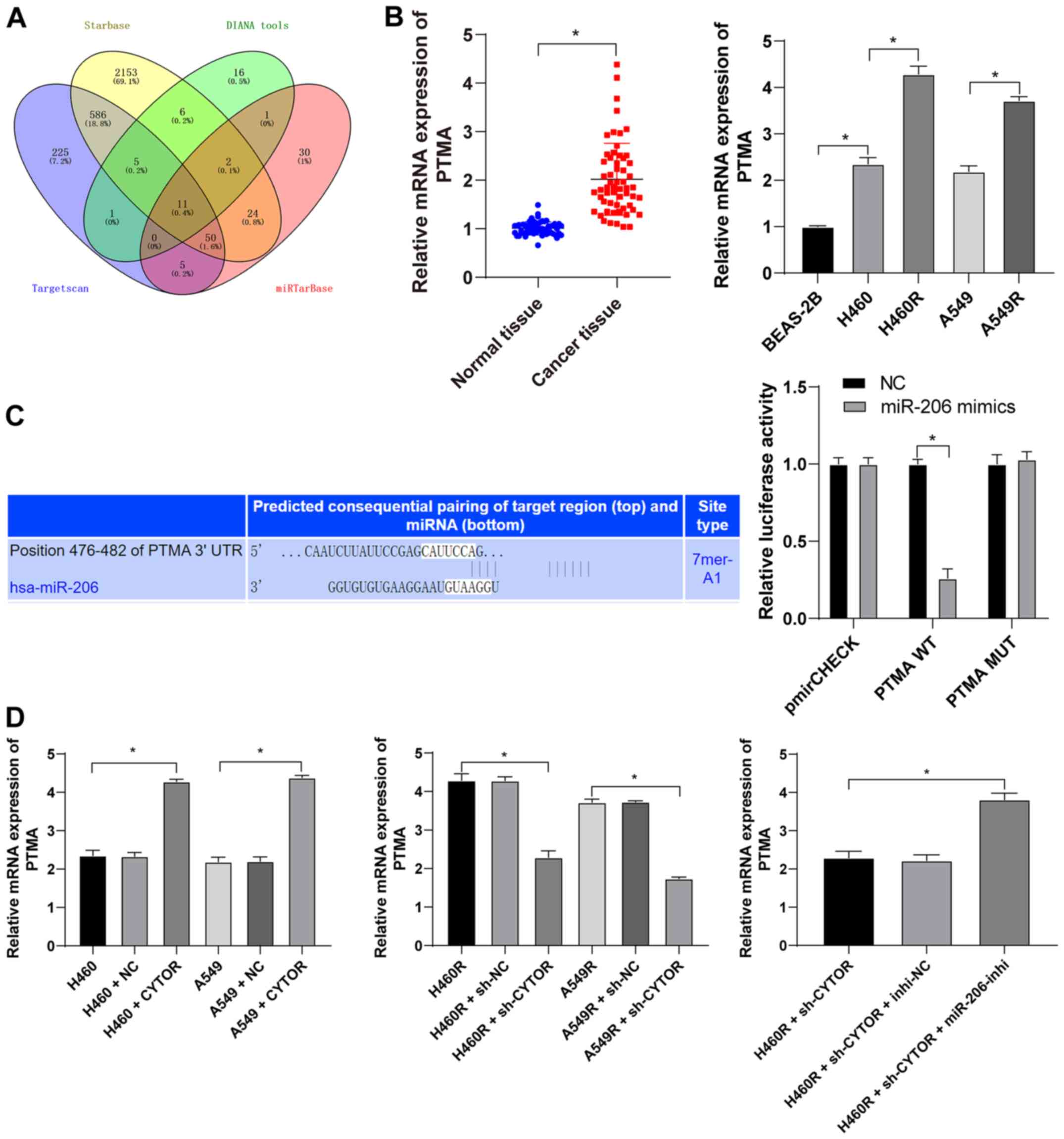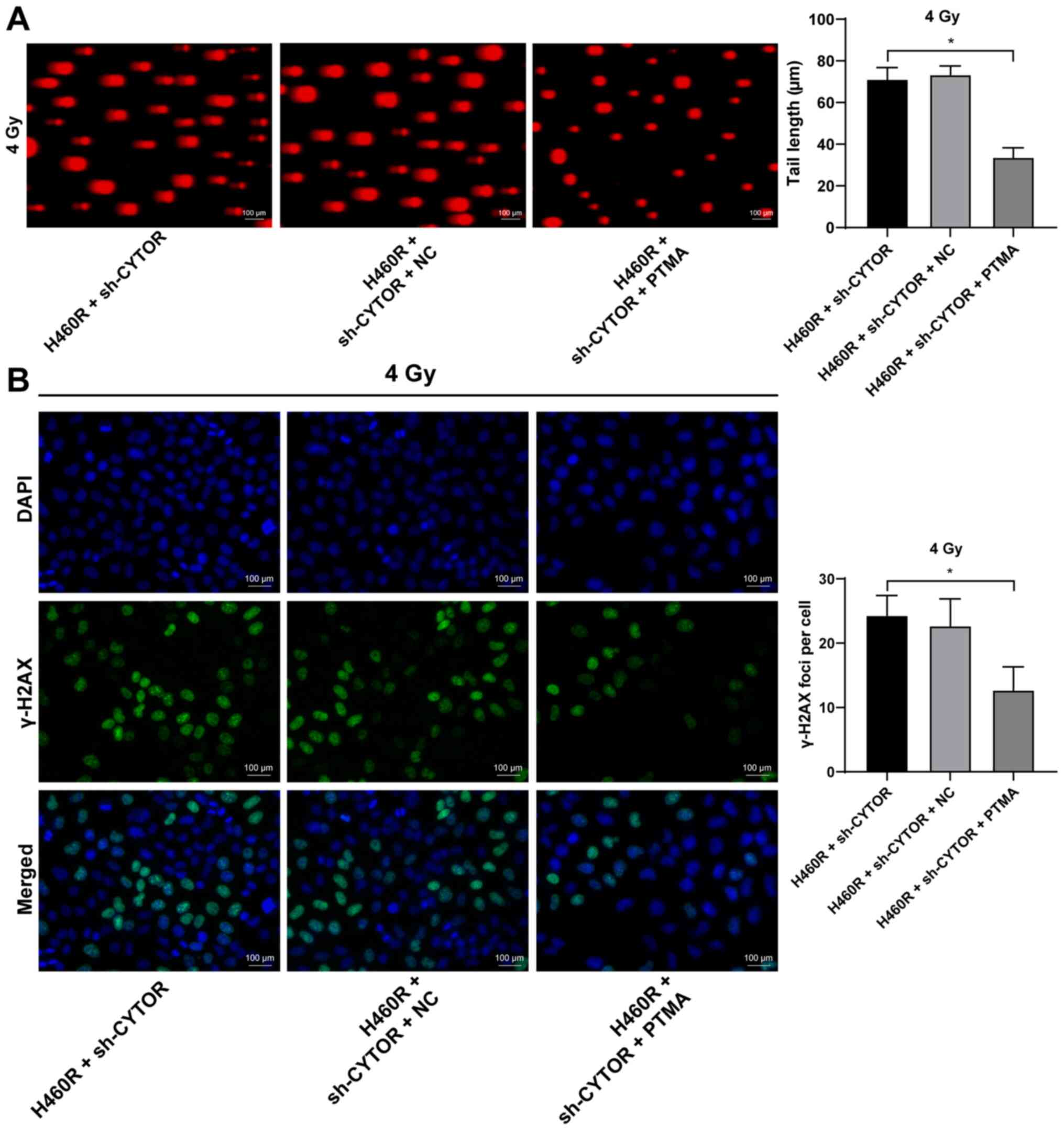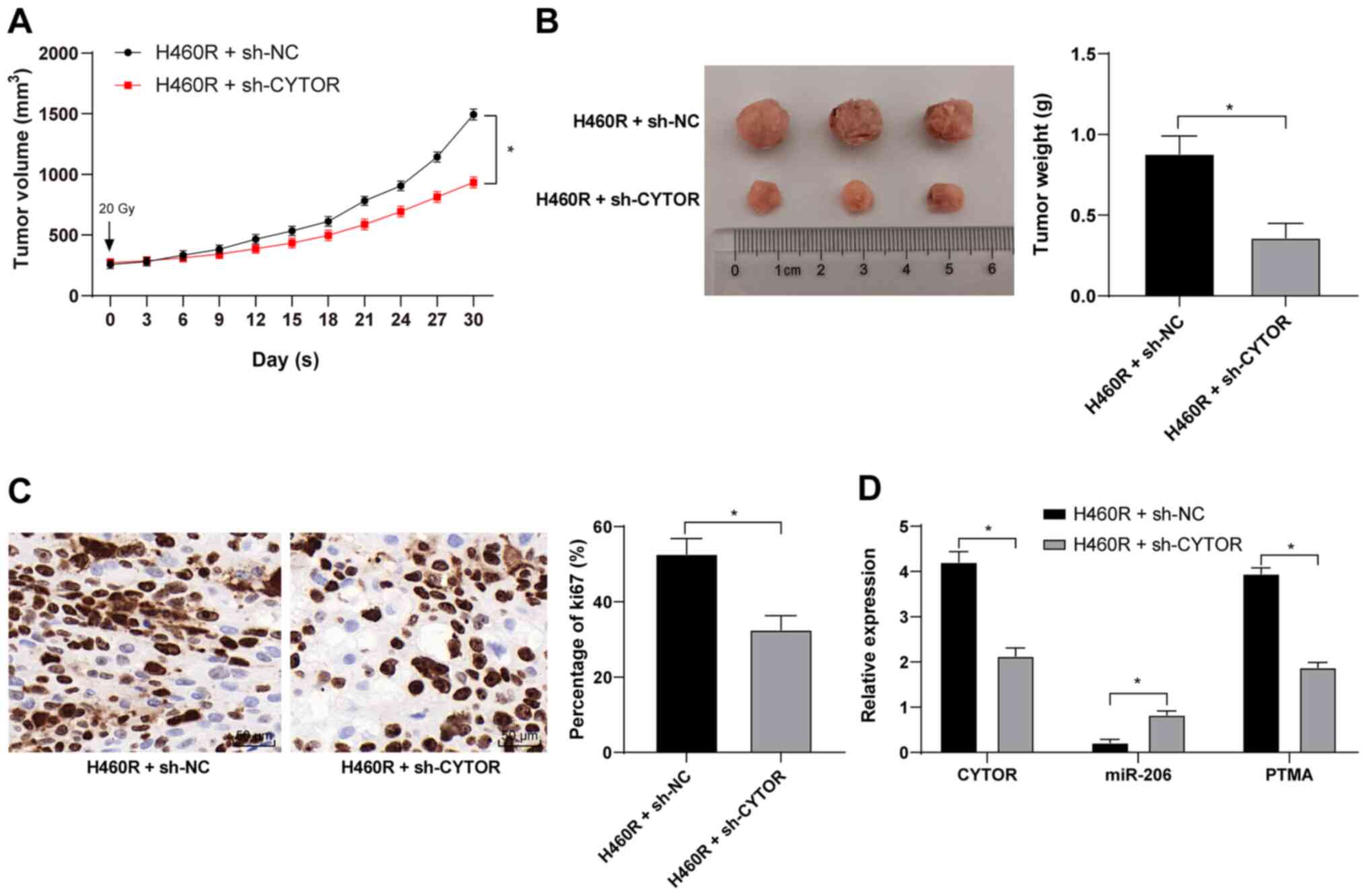|
1
|
Chen Z, Fillmore CM, Hammerman PS, Kim CF
and Wong KK: Non-small-cell lung cancers: A heterogeneous set of
diseases. Nat Rev Cancer. 14:535–546. 2014. View Article : Google Scholar
|
|
2
|
Tandberg DJ, Tong BC, Ackerson BG and
Kelsey CR: Surgery versus stereotactic body radiation therapy for
stage I non-small cell lung cancer: A comprehensive review. Cancer.
124:667–678. 2018. View Article : Google Scholar
|
|
3
|
Rafei H, El-Bahesh E, Finianos A,
Nassereddine S and Tabbara I: Immune-based therapies for non-small
cell lung cancer. Anticancer Res. 37:377–387. 2017. View Article : Google Scholar
|
|
4
|
Elias R, Morales J and Presley C:
Checkpoint inhibitors for non-small cell lung cancer among older
adults. Curr Oncol Rep. 19:622017. View Article : Google Scholar
|
|
5
|
Gridelli C, Rossi A, Carbone DP, Guarize
J, Karachaliou N, Mok T, Petrella F, Spaggiari L and Rosell R:
Non-small-cell lung cancer. Nat Rev Dis Primers. May 21–2015.Epub
ahead of print. View Article : Google Scholar
|
|
6
|
Skřičková J, Kadlec B, Venclíček O and
Merta Z: Lung cancer. Cas Lek Cesk. 157:226–236. 2018.
|
|
7
|
Liang J, Lu T, Chen Z, Zhan C and Wang Q:
Mechanisms of resistance to pemetrexed in non-small cell lung
cancer. Transl Lung Cancer Res. 8:1107–1118. 2019. View Article : Google Scholar
|
|
8
|
Tabchi S, Kassouf E, Rassy EE, Kourie HR,
Martin J, Campeau MP, Tehfe M and Blais N: Management of stage III
non-small cell lung cancer. Semin Oncol. 44:163–177. 2017.
View Article : Google Scholar
|
|
9
|
Pennell NA, Arcila ME, Gandara DR and West
H: Biomarker testing for patients with advanced non-small cell lung
cancer: Real-world issues and tough choices. Am Soc Clin Oncol Educ
Book. 39:531–542. 2019. View Article : Google Scholar
|
|
10
|
Huang Q: Predictive relevance of ncRNAs in
non-small-cell lung cancer patients with radiotherapy: A review of
the published data. Biomarkers Med. 12:1149–1159. 2018. View Article : Google Scholar
|
|
11
|
Bhan A, Soleimani M and Mandal SS: Long
noncoding RNA and cancer: A New Paradigm. Cancer Res. 77:3965–3981.
2017. View Article : Google Scholar
|
|
12
|
Yu H and Li SB: Role of LINC00152 in
non-small cell lung cancer. J Zhejiang Univ Sci B. 21:179–191.
2020. View Article : Google Scholar
|
|
13
|
Yue B, Liu C, Sun H, Liu M, Song C, Cui R,
Qiu S and Zhong M: A positive feed-forward loop between
LncRNA-CYTOR and Wnt/β-catenin signaling promotes metastasis of
colon cancer. Mol Ther. 26:1287–1298. 2018. View Article : Google Scholar :
|
|
14
|
Moradi MT, Hatami R and Rahimi Z:
Circulating CYTOR as a potential biomarker in breast cancer. Int J
Mol Cell Med. 9:83–90. 2020.
|
|
15
|
Liu Y, Li M, Yu H and Piao H: lncRNA CYTOR
promotes tamoxifen resistance in breast cancer cells via sponging
miR 125a 5p. Int J Mol Med. 45:497–509. 2020.
|
|
16
|
Chen S, Yang M, Wang C, Ouyang Y, Chen X,
Bai J, Hu Y, Song M, Zhang S and Zhang Q: Forkhead box D1 promotes
EMT and chemoresistance by upregulating lncRNA CYTOR in oral
squamous cell carcinoma. Cancer Lett. 503:43–53. 2021. View Article : Google Scholar
|
|
17
|
Zhu H, Shan Y, Ge K, Lu J, Kong W and Jia
C: LncRNA CYTOR promotes pancreatic cancer cell proliferation and
migration by sponging miR-205-5p. Pancreatology. 20:1139–1148.
2020. View Article : Google Scholar
|
|
18
|
Li M, Wang Q, Xue F and Wu Y: lncRNA-CYTOR
works as an Oncogene through the CYTOR/miR-3679-5p/MACC1 axis in
colorectal cancer. DNA Cell Biol. 38:572–582. 2019. View Article : Google Scholar
|
|
19
|
Hu B, Yang XB, Yang X and Sang XT: LncRNA
CYTOR affects the proliferation, cell cycle and apoptosis of
hepatocellular carcinoma cells by regulating the
miR-125b-5p/KIAA1522 axis. Aging (Albany NY). 13:2626–2639. 2020.
View Article : Google Scholar
|
|
20
|
Petrek H and Yu AM: MicroRNAs in non-small
cell lung cancer: Gene regulation, impact on cancer cellular
processes, and therapeutic potential. Pharmacol Res Perspect.
7:e005282019. View
Article : Google Scholar
|
|
21
|
Shengnan J, Dafei X, Hua J, Sunfu F,
Xiaowei W and Liang X: Long non-coding RNA HOTAIR as a competitive
endogenous RNA to sponge miR-206 to promote colorectal cancer
progression by activating CCL2. J Cancer. 11:4431–4441. 2020.
View Article : Google Scholar
|
|
22
|
Cao HL, Liu ZJ, Huang PL, Yue YL and Xi
JN: lncRNA-RMRP promotes proliferation, migration and invasion of
bladder cancer via miR-206. Eur Rev Med Pharmacol Sci.
23:1012–1021. 2019.
|
|
23
|
Liao M and Peng L: MiR-206 may suppress
non-small lung cancer metastasis by targeting CORO1C. Cell Mol Biol
Lett. 25:222020. View Article : Google Scholar
|
|
24
|
Samaeekia R, Adorno-Cruz V, Bockhorn J,
Chang YF, Huang S, Prat A, Ha N, Kibria G, Huo D, Zheng H, et al:
miR-206 inhibits stemness and metastasis of breast cancer by
targeting MKL1/IL11 pathway. Clin Cancer Res. 23:1091–1103. 2017.
View Article : Google Scholar
|
|
25
|
Jiao D, Chen J, Li Y, Tang X, Wang J, Xu
W, Song J, Li Y, Tao H and Chen Q: miR-1-3p and miR-206 sensitizes
HGF-induced gefitinib-resistant human lung cancer cells through
inhibition of c-Met signalling and EMT. J Cell Mol Med.
22:3526–3536. 2018. View Article : Google Scholar
|
|
26
|
Weidle UH, Birzele F and Nopora A:
MicroRNAs as potential targets for therapeutic intervention with
metastasis of non-small cell lung cancer. Cancer Genomics
Proteomics. 16:99–119. 2019. View Article : Google Scholar
|
|
27
|
Zhu Y, Qi X, Yu C, Yu S, Zhang C, Zhang Y,
Liu X, Xu Y, Yang C, Jiang W, et al: Identification of prothymosin
alpha (PTMA) as a biomarker for esophageal squamous cell carcinoma
(ESCC) by label-free quantitative proteomics and Quantitative Dot
Blot (QDB). Clin Proteomics. 16:122019. View Article : Google Scholar
|
|
28
|
Sandow JJ, Rainczuk A, Infusini G, Makanji
M, Bilandzic M, Wilson AL, Fairweather N, Stanton PG, Garama D,
Gough D, et al: Discovery and validation of novel protein
biomarkers in ovarian cancer patient urine. Proteomics Clin Appl.
12:e17001352018. View Article : Google Scholar : PubMed/NCBI
|
|
29
|
Li JH, Liu S, Zhou H, Qu LH and Yang JH:
starBase v2.0: Decoding miRNA-ceRNA, miRNA-ncRNA and protein-RNA
interaction networks from large-scale CLIP-Seq data. Nucleic Acids
Res. 42:D92–D97. 2014. View Article : Google Scholar
|
|
30
|
Yan F, Zhao W, Xu X, Li C, Li X, Liu S,
Shi L and Wu Y: LncRNA DHRS4-AS1 inhibits the stemness of NSCLC
cells by sponging miR-224-3p and upregulating TP53 and TET1. Front
Cell Dev Biol 2020. 8:5852512020. View Article : Google Scholar
|
|
31
|
Li Z, Qu Z, Wang Y, Qin M and Zhang H:
miR-101-3p sensitizes non-small cell lung cancer cells to
irradiation. Open Med (Wars). 15:413–423. 2020. View Article : Google Scholar
|
|
32
|
Livak KJ and Schmittgen TD: Analysis of
relative gene expression data using real-time quantitative PCR and
the 2(-Delta Delta C(T)) method. Methods. 25:402–408. 2001.
View Article : Google Scholar
|
|
33
|
Zamani M, Etebari M and Moradi SH: The
increment of genoprotective effect of melatonin due to 'Autooptic'
effect versus the genotoxicity of mitoxantrone. J Biomed Phys Eng.
10:771–782. 2020.
|
|
34
|
Paraskevopoulou MD, Vlachos IS, Karagkouni
D, Georgakilas G, Kanellos I, Vergoulis T, Zagganas K, Tsanakas P,
Floros E, Dalamagas T, et al: DIANA-LncBase v2: Indexing microRNA
targets on non-coding transcripts. Nucleic Acids Res. 44:D231–D238.
2016. View Article : Google Scholar
|
|
35
|
Jeggari A, Marks DS and Larsson E:
miRcode: A map of putative microRNA target sites in the long
non-coding transcriptome. Bioinformatics. 28:2062–2063. 2012.
View Article : Google Scholar
|
|
36
|
Agarwal V, Bell GW, Nam JW and Bartel DP:
Predicting effective microRNA target sites in mammalian mRNAs.
eLife. 4:20152015. View Article : Google Scholar
|
|
37
|
Huang HY, Lin YC, Li J, Huang KY, Shrestha
S, Hong HC, Tang Y, Chen YG, Jin CN, Yu Y, et al: miRTarBase 2020:
Updates to the experimentally validated microRNA-target interaction
database. Nucleic Acids Res. 48:D148–D154. 2020.
|
|
38
|
Wang L, Tong X, Zhou Z, Wang S, Lei Z,
Zhang T, Liu Z, Zeng Y, Li C, Zhao J, et al: Circular RNA
hsa_circ_0008305 (circPTK2) inhibits TGF-β-induced
epithelial-mesenchymal transition and metastasis by controlling
TIF1γ in non-small cell lung cancer. Mol Cancer. 17:1402018.
View Article : Google Scholar
|
|
39
|
Jones-Bolin S: Guidelines for the care and
use of laboratory animals in biomedical research. Curr Protoc
Pharmacol 2012 Appendix. 4:4B2012.
|
|
40
|
Wang T, Dong XM, Zhang FL and Zhang JR:
miR-206 enhances nasopharyngeal carcinoma radiosensitivity by
targeting IGF1. Kaohsiung J Med Sci. 33:427–432. 2017. View Article : Google Scholar
|
|
41
|
Ojima E, Inoue Y, Miki C, Mori M and
Kusunoki M: Effectiveness of gene expression profiling for response
prediction of rectal cancer to preoperative radiotherapy. J
Gastroenterol. 42:730–736. 2007. View Article : Google Scholar : PubMed/NCBI
|
|
42
|
Chiu YH, Hsu SH, Hsu HW, Huang KC, Liu W,
Wu CY, Huang WP, Chen JY, Chen BH and Chiu CC: Human non small cell
lung cancer cells can be sensitized to camptothecin by modulating
autophagy. Int J Oncol. 53:1967–1979. 2018.
|
|
43
|
Osielska MA and Jagodziński PP: Long
non-coding RNA as potential biomarkers in non-small-cell lung
cancer: What do we know so far? Biomed Pharmacother. 101:322–333.
2018. View Article : Google Scholar
|
|
44
|
Liang J, Wei X, Liu Z, Cao D, Tang Y, Zou
Z, Zhou C and Lu Y: Long noncoding RNA CYTOR in cancer: A TCGA data
review. Clin Chim Acta. 483:227–233. 2018. View Article : Google Scholar : PubMed/NCBI
|
|
45
|
Yu Y, Yang J, Li Q, Xu B, Lian Y and Miao
L: LINC00152: A pivotal oncogenic long non-coding RNA in human
cancers. Cell Prolif. 50:20172017.
|
|
46
|
Quan FY, Jiang J, Zhai YF, Li B, Wu XH and
Nie W: The prognostic effect of LINC00152 for cancer: A
meta-analysis. Oncotarget. 8:75427–75433. 2017. View Article : Google Scholar
|
|
47
|
Mao Y, Tie Y, Du J and He J:
LINC00152-promotes the proliferation of gastric cancer cells by
regulating B-cell lymphoma-2. J Cell Biochem. 120:3747–3756. 2019.
View Article : Google Scholar
|
|
48
|
Li N, Feng XB, Tan Q, Luo P, Jing W, Zhu
M, Liang C, Tu J and Ning Y: Identification of circulating long
noncoding RNA Linc00152 as a novel biomarker for diagnosis and
monitoring of non-small-cell lung cancer. Dis Markers.
2017:74396982017. View Article : Google Scholar
|
|
49
|
Feng S, Zhang J, Su W, Bai S, Xiao L, Chen
X, Lin J, Reddy RM, Chang AC, Beer DG and Chen G: Overexpression of
LINC00152 correlates with poor patient survival and knockdown
impairs cell proliferation in lung cancer. Sci Rep. 7:29822017.
View Article : Google Scholar
|
|
50
|
Zhang J and Li W: Long noncoding RNA CYTOR
sponges miR-195 to modulate proliferation, migration, invasion and
radiosensitivity in nonsmall cell lung cancer cells. Biosci Rep.
38:20182018. View Article : Google Scholar
|
|
51
|
Zou H and Li H: Knockdown of long
non-coding RNA LINC00152 increases cisplatin sensitivity in ovarian
cancer cells. Exp Ther Med. 18:4510–4516. 2019.
|
|
52
|
Sun Z, Guo X, Zang M, Wang P, Xue S and
Chen G: Long non-coding RNA LINC00152 promotes cell growth and
invasion of papillary thyroid carcinoma by regulating the
miR-497/BDNF axis. J Cell Physiol. 234:1336–1345. 2019. View Article : Google Scholar
|
|
53
|
Ma P, Wang H, Sun J, Liu H, Zheng C, Zhou
X and Lu Z: LINC00152 promotes cell cycle progression in
hepatocellular carcinoma via miR-193a/b-3p/CCND1 axis. Cell Cycle.
17:974–984. 2018. View Article : Google Scholar
|
|
54
|
Chang L, Guo R, Yuan Z, Shi H and Zhang D:
LncRNA HOTAIR regulates CCND1 and CCND2 expression by sponging
miR-206 in ovarian cancer. Cell Physiol Biochem. 49:1289–1303.
2018. View Article : Google Scholar
|
|
55
|
Ren D, Zheng H, Fei S and Zhao JL: MALAT1
induces osteosarcoma progression by targeting miR-206/CDK9 axis. J
Cell Physiol. 234:950–957. 2018. View Article : Google Scholar
|
|
56
|
Wang Y, Xu H, Si L, Li Q, Zhu X, Yu T and
Gang X: MiR-206 inhibits proliferation and migration of prostate
cancer cells by targeting CXCL11. Prostate. 78:479–490. 2018.
View Article : Google Scholar
|
|
57
|
Wang P, Gu J, Wang K, Shang J and Wang W:
miR-206 inhibits thyroid cancer proliferation and invasion by
targeting RAP1B. J Cell Biochem. 120:18927–18936. 2019. View Article : Google Scholar : PubMed/NCBI
|
|
58
|
Dai C, Xie Y, Zhuang X and Yuan Z: MiR-206
inhibits epithelial ovarian cancer cells growth and invasion via
blocking c-Met/AKT/mTOR signaling pathway. Biomed Pharmacother.
104:763–770. 2018. View Article : Google Scholar
|
|
59
|
Liu F, Yin R, Chen X, Chen W, Qian Y, Zhao
Y, Jiang Y, Ma D, Hu T, Yu T, et al: Over-expression of miR-206
decreases the Euthyrox-resistance by targeting MAP4K3 in papillary
thyroid carcinoma. Biomed Pharmacother. 114:1086052019. View Article : Google Scholar
|
|
60
|
Jia KG, Feng G, Tong YS, Tao GZ and Xu L:
miR-206 regulates non-small-cell lung cancer cell aerobic
glycolysis by targeting hexokinase 2. J Biochem. 167:365–370. 2020.
View Article : Google Scholar
|
|
61
|
Yang L, Sun H, Liu X, Chen J, Tian Z, Xu
J, Xiang B and Qin B: Circular RNA hsa_circ_0004277 contributes to
malignant phenotype of colorectal cancer by sponging miR-512-5p to
upregulate the expression of PTMA. J Cell Physiol. Jan 21–2020.Epub
ahead of print. View Article : Google Scholar
|
|
62
|
Yang C, Zhang J, Ding M, Xu K, Li L, Mao L
and Zheng J: Ki67 targeted strategies for cancer therapy. Clin
Transl Oncol. 20:570–575. 2018. View Article : Google Scholar
|
|
63
|
Wierzbicka-Tutka I, Sokołowski G,
Bałdys-Waligórska A, Adamek D, Radwańska E and Gołkowski F:
Prothymosin-alpha and Ki-67 expression in pituitary adenomas.
Postepy Hig Med Dosw. 70:1117–1123. 2016. View Article : Google Scholar
|
|
64
|
Wang Y, Li M, Dong C, Ma Y, Xiao L, Zuo S,
Gong Y, Ren T and Sun B: Linc00152 knockdown inactivates the
Akt/mTOR and Notch1 pathways to exert its anti-hemangioma effect.
Life Sci. 223:22–28. 2019. View Article : Google Scholar
|
|
65
|
Du L, Huang GH, Mou KJ, Xiang Y, Tang JH,
Xu W, Xia SL, Zhao JN and Lv SQ: MiR-206 is down-regulated and
suppresses cell proliferation by targeting FOXP1 in brain gliomas.
Int J Clin Exp Pathol. 11:3405–3415. 2018.
|















